Recently, one of my clients asked if I would add some blue flowers to her garden. Her young daughter had learned that dogs are color-blind and can see only blues and yellows, and now she wanted to make sure their garden had blue flowers in it so that their dog would be able to enjoy them. Naturally my heart swelled and my list of blue flowers grew. I bolted to the nursery and picked up some favorites.
Because of this project, I learned to truly appreciate how blues add a cooling and calming splash of color. I also learned, after reading the book, How the Rose Got its Thorns and Other Botanical Stories, by Andrew Ormerod, that few plants produce anthocyanins, the pigments responsible for the blue hue, which is why blue flowers are relatively rare in nature. “They are most commonly found in environmentally impoverished habitats where pollinators are scarce—with its short wavelength, the color blue stands out and attracts bee pollinators,” he writes.
Here are eight of my favorite blue flowers (and possibly dog and bee favorites, too).
1. Lobelia, Lobelia erinus ‘Magadi Compact Dark Blue’
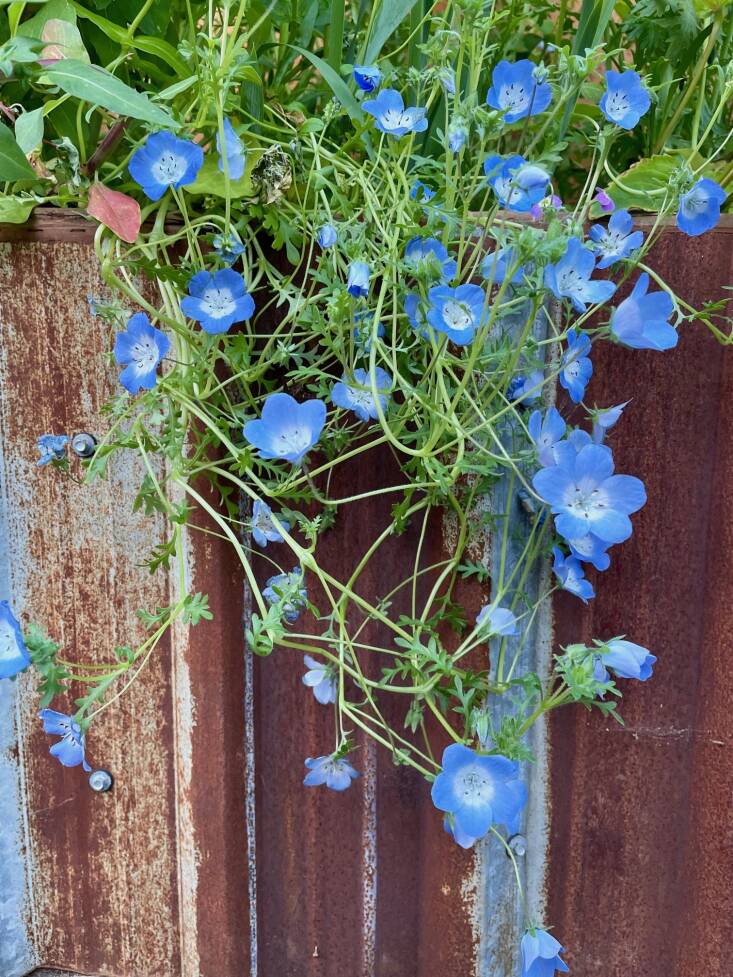
Sometimes you need a fast-growing annual to add to pots, containers, and window boxes that are in a sunny spot. This lobelia is so good at filling planting gaps with color. With a trailing habit, it’s slightly upright, slightly relaxed, and produces vibrant blue flowers in the spring through summer if deadheaded. In mild climates this annual can reseed—in a good way. Hardy in USDA Zones 8-11. I like to plant mine from six-packs or from seed.
2. Siberian bugloss, Brunnera macrophylla
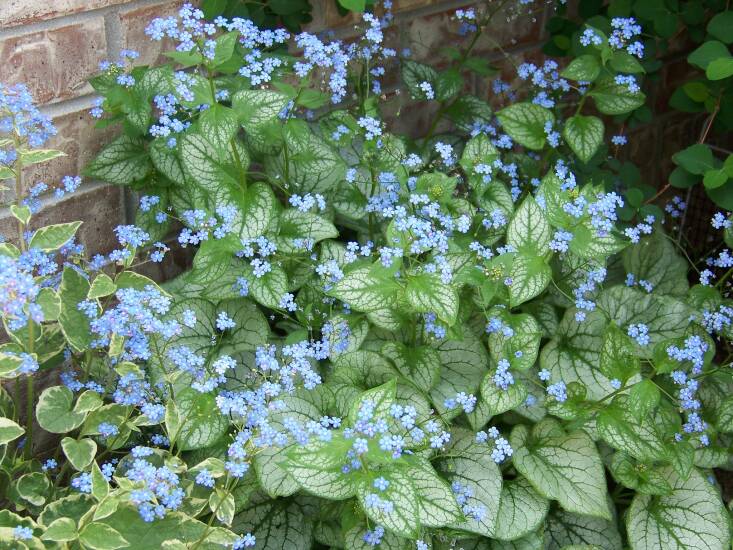
What makes this perennial extra cute are the heart-shaped leaves and the tiny baby-blue flowers that arrive in the spring and continue through the summer. Add this deer-resistant, easy-to-grow ground cover to a partly shaded cottage or woodland garden and pair it with hellebores, bleeding hearts, and ferns. Grows to 1 to 2 feet high and as wide. Hardy in USDA Zones 3-9.
3. Baby blue eyes, Nemophila menziesii
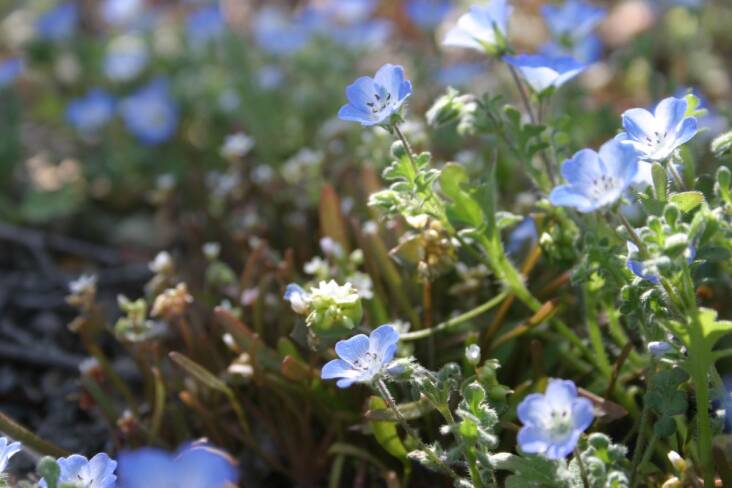
Native to California, this darling annual gifts you with bright blue dainty flowers in the spring. Easy to sow from seed, it is commonly added to wildflower seed mixes. Pro tip: Sow your seeds in a partly sunny spot and provide them with ample water. I sowed my seeds in the fall for my spring bloom, but I live in a warm-winter areas. In cold-winter areas, sow your seeds in the spring. The flower grows to a petite 10 inches high and in a container, will tumble playfully over the edges. You can purchase seeds through Larner Seeds.
4. Pincushion flower, Scabiosa Caucasica ‘Fama Deep Blue’
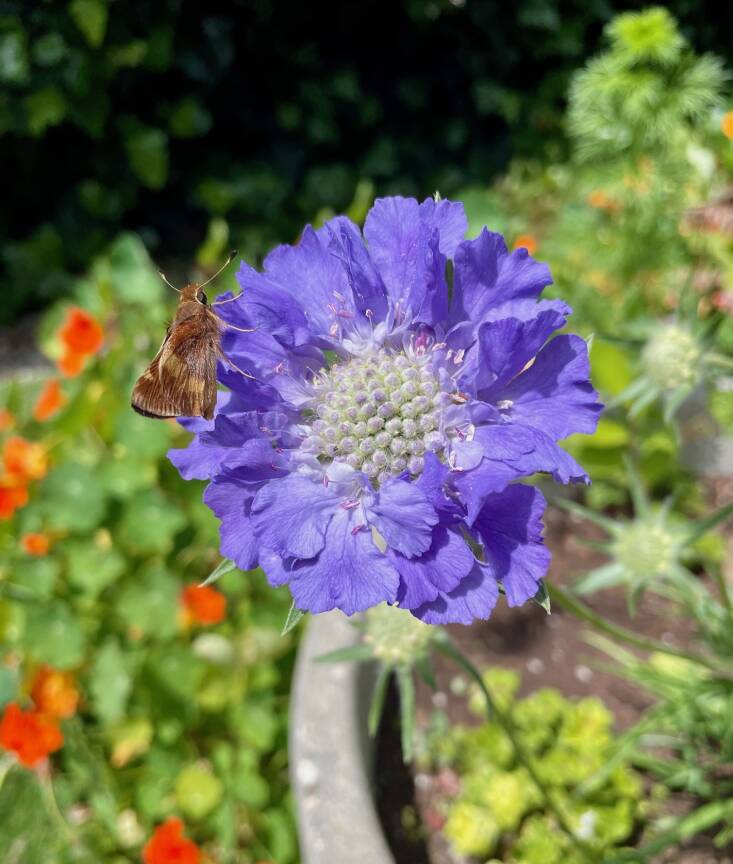
I grow this flower in my garden and and am rewarded with mega large ruffled blue blooms—4 inches across! I swear, these flowers are constantly buzzing with bees and butterflies from spring to fall. It also makes an excellent long-lasting cut flower, and the more I cut, the more blooms I get. Grows to 2 feet tall and wide and likes full sun and well-draining soil. Perfect when added to pots or edging a perennial bed or cutting garden. Hardy in USDA Zones 4-9.
5. Germander sage, Salvia chamaedryoides
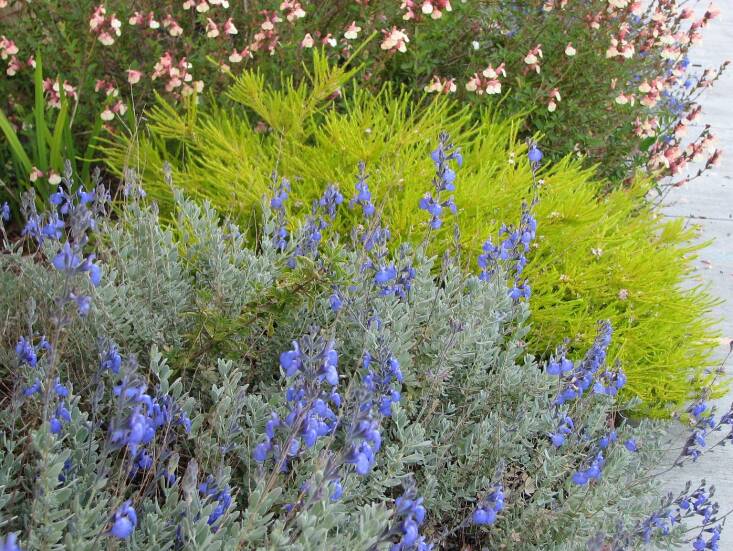
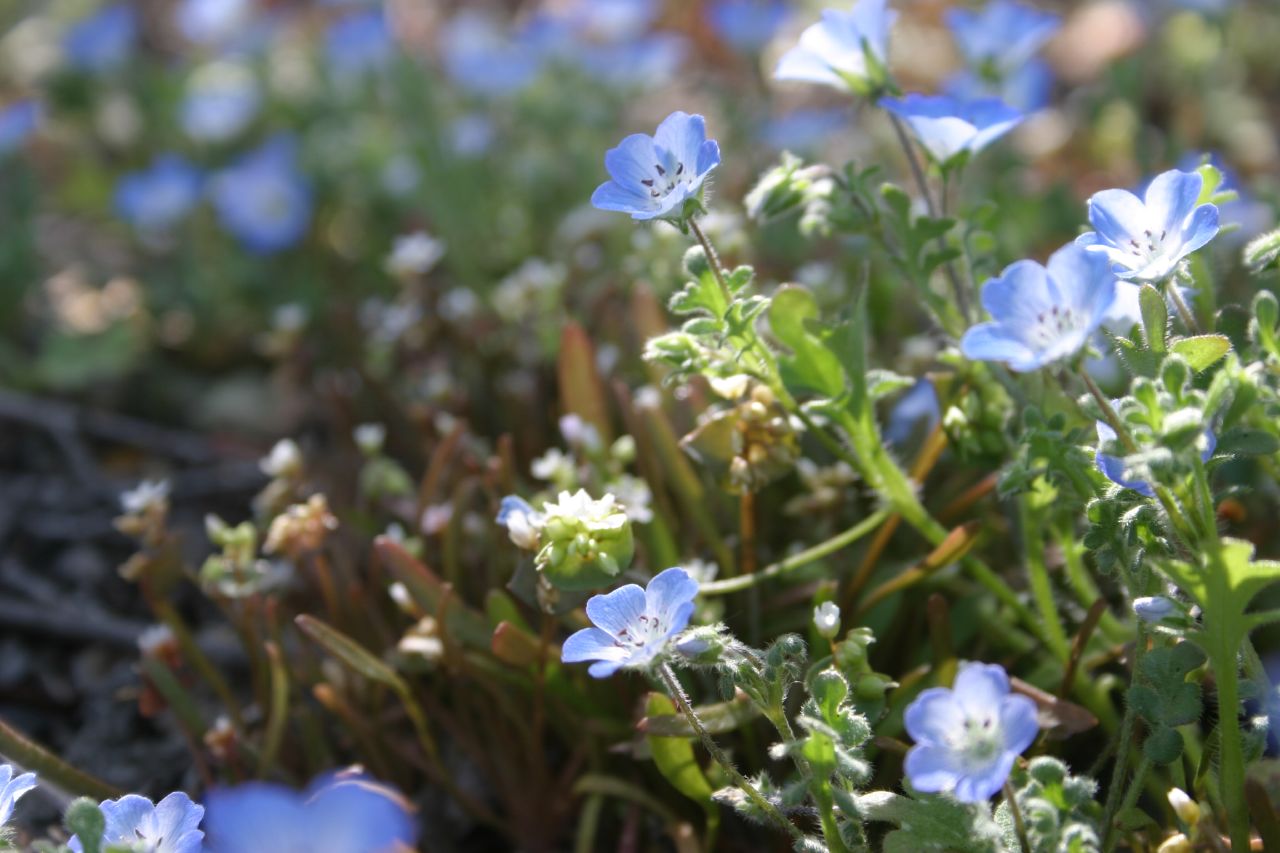
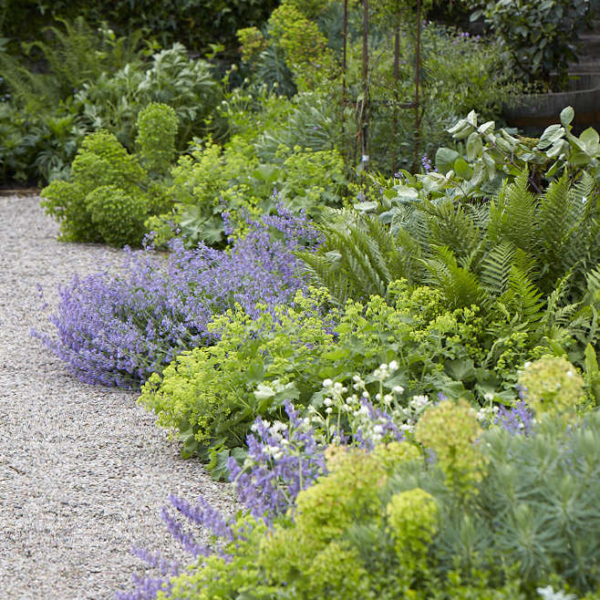
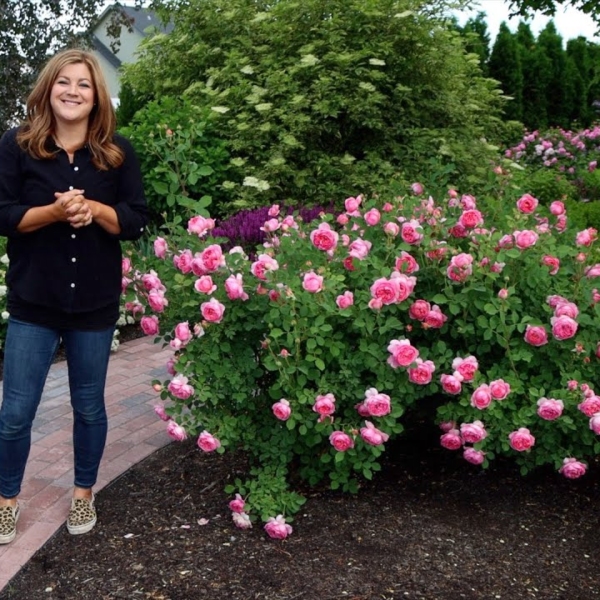


 // Garden Answer
// Garden Answer